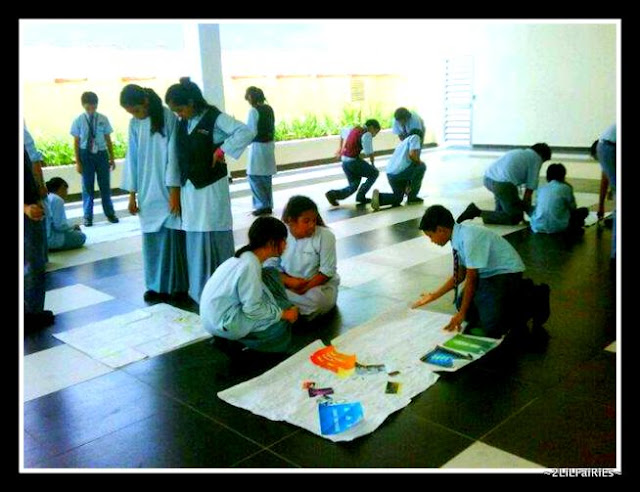Assalamualaikum & and a very good morning.
How are you all doing today?
I believe that towards end of the year,everybody in the schools are juggling with lots of activities but most important of all is the revision for year end exam.
As some of us ( teachers) may need to cope with this crucial time as we have to cater the needs of our students so as the smooth flow of activities arrangement, consider the way of revision activity in this entry as an alternative.
I believe that all of us are aware that our students these days love to be the centre of attention.
they love to be given responsibilities and chances to do things on their own.
So, this was what we had in our revision period last time.
As simple as this,
to revice the whole year topics,3-4 students were assigned in 1 group.
It actually depends on how many topics you plan to cover and the number of students you are having.
So,basically, each group was assigned with a topic.
They sat together,discussed, created a mind map and made sure that they became the specialist of that particular topic.
each group chose a representative to be their spokesperson.
representatives of all groups chose one station each and the whole class was in a huge circle.
the rest of the group members walked to a station to another,to actually get explanation of each topic available.
they walked around in a clockwise.
only representatives stayed at their station as the host.
after all groups have visited all stations,it was the hosts' turn to freely visit all stations.
as for conclusion,
my students seemed to enjoy this way of revising as they were given the 'power' to control the session :)
and of course it was a fruitful session when most of them could give me valuable feedbacks .
here are some pictures throughout the activity :)
enjoy doing revision :)


























































